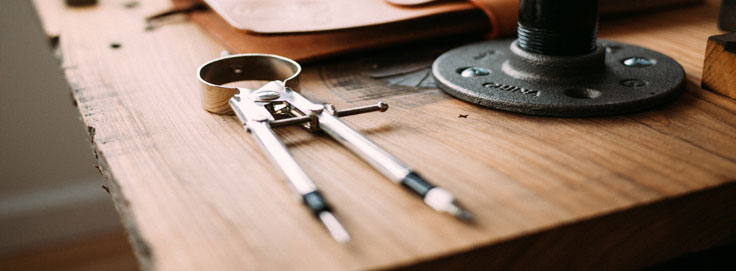
Here's the deal.
Everyone wants the biggest diamond that their money can buy.
The problem of course is that there are so many variations of diamond qualities that it is entirely possible to end up with a stone that is just plain ugly if size is the only focus. So just because a diamond is bigger doesn't mean it's a good stone.
How come they've got it for sale then?, I hear you say.
The truth is that they are there for choice. You are free to choose the quality of your diamond. I would venture to say that those who end up with the duds don't realize what they are missing out on. If they haven't seen diamonds in real life and have restricted their research to only looking at online listings they can very easily come away with the assumption that the diamond they get is a normal diamond.
However those who do their research and get to know the difference between the different qualities of diamond soon come to understand some very important facts. It's much more satisfying to own a diamond that is finely crafted. Finely crafted diamonds are attractive and shine in a magical way. The beauty that becomes part of one's life through the ownership of a magnificent gem emanates through every aspect of life and the wearer feel special.
If you have your heart set on a certain size but every diamond of that size you see is just beyond the budget, rather than compromising on quality you will be much happier if you look at a smaller diamond that is an ideal cut.
Even a compromise on color grade is not going to be detrimental if you get an ideal cut diamond.
This is something that many people just can't wrap their head around. Diamond is a very special material. When light passes through a diamond the facets act as both a mirror and a window. This means that a diamond lets light in and then returns it to the eye of the beholder. Because it gathers light from its surroundings and then adds the light up and sends it back a very interesting effect happens. Any color in the diamond becomes negligible when light is returned precisely and effectively. This is why you can get a diamond from the lower color grades if the diamond has been cut to be super ideal. The diamonds that meet this type of criteria are ones by Brian Gavin Diamonds, Whiteflash, or Victor Canera.
The Proof Found In Ovals
To get an idea about what I am saying I recommend you look at oval cut diamonds from among lower color grades such as J, or K. -- Or even better, L if you can find any.
Diamonds are for the most part uniform in their color.
But ovals do actually look like they have a range of color.
That's an illusion since it's the light performance that reduces the appearance of color in parts of the diamond.
Let me bring one up as an example so you get an idea as to what I am talking about
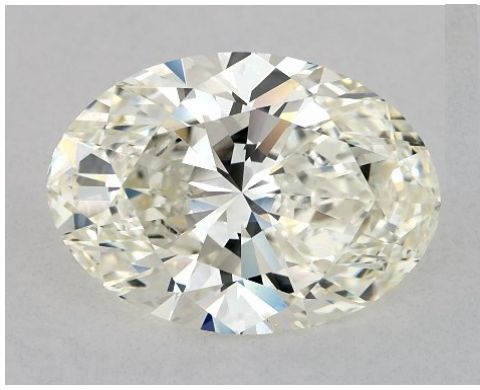
Here is a 3.01 Carat K-SI1 Oval Cut Diamond found at James Allen. As far as oval cut diamonds go this is a fantastic diamond. I have chosen it because it demonstrates perfectly how the color of a diamond is less evident in the parts of a diamond that return light efficiently. You will notice that certain the areas of the diamond show the K color of the diamonds while the central band looks lighter than the rest of the diamond.
This is going to be the case with every oval cut diamond. so if you are going to choose a lower color grade diamond that is cut into an oval shape you will see its color in parts of the diamond no matter how well cut it is. The only way to avoid seeing color in an entire oval cut diamond is to choose one from the D-E-F color range.
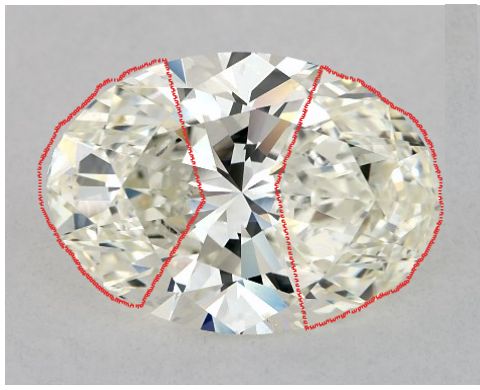
If I trace the areas in question on this oval diamond you can see what I mean. The central area returns light efficiently and the result is that the color of the diamond is naturally reduced and becomes less apparent.
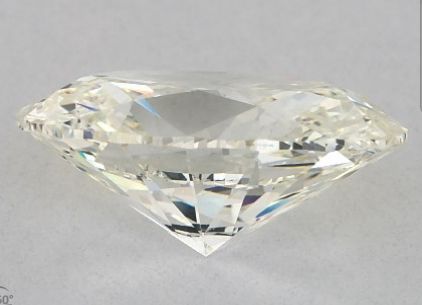
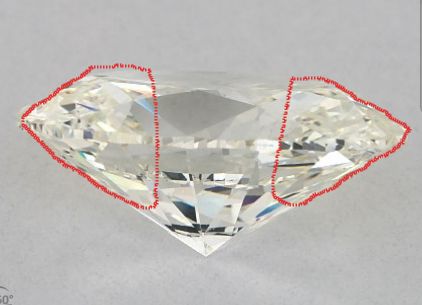
The ideal proportions found in a round brilliant diamond can be found in an oval diamond but only in part of it.
Round brilliant diamonds return the most light when they have a depth percentage somewhere between 59% and 63%. Ideally oval diamonds have this ratio when measuring the width and depth, but as the length is much longer than their width if we were to calculate the depth percentage we would get a very shallow cut.
I hope this is making sense to you.
Anyway, all that to say that if you want to find a diamond that still looks nearly colorless even though it has a lower color grade get a super ideal cut diamond.